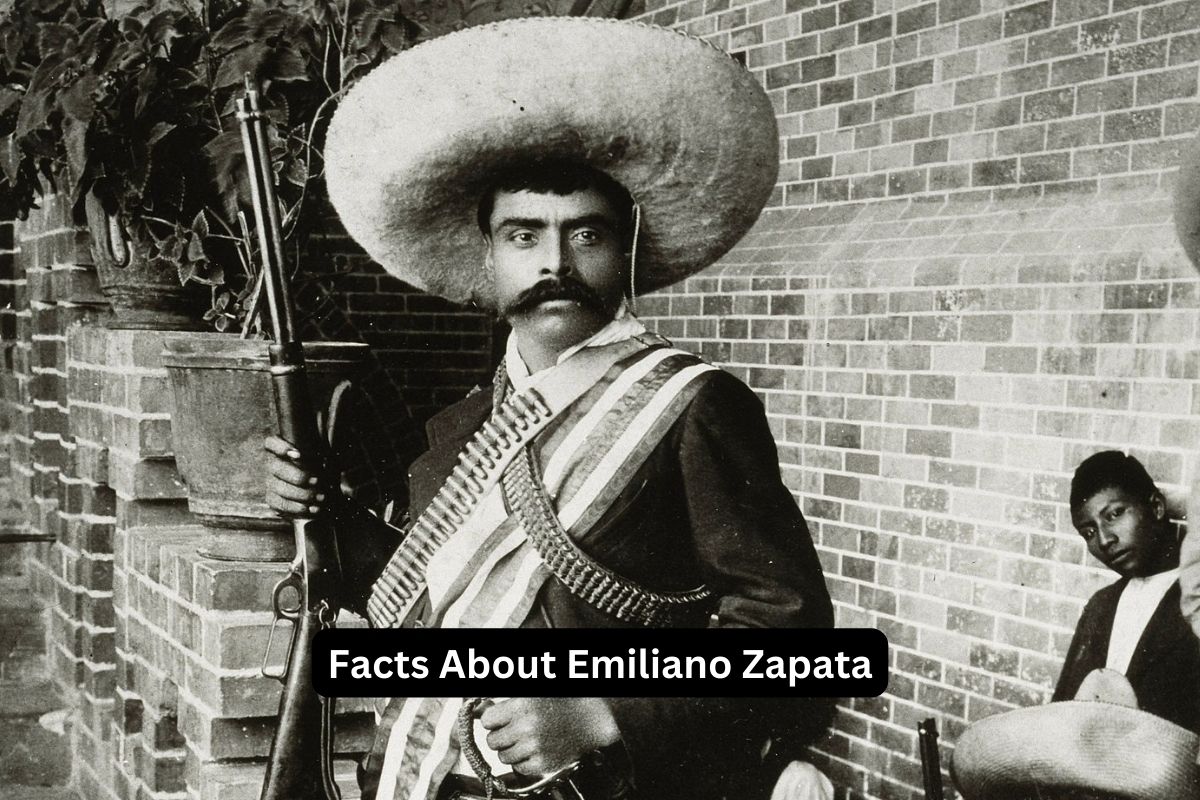Emiliano Zapata, a towering figure in Mexican history, epitomized the struggle for social justice and agrarian reform during the tumultuous period of the Mexican Revolution.
Born into a humble peasant family in Morelos, Mexico, Zapata rose to prominence as the leader of the Zapatista movement, advocating for the rights of the rural poor and indigenous communities.
His rallying cry of “Tierra y Libertad” (Land and Liberty) encapsulated his vision of a Mexico where the land belonged to those who worked it.
This article explores the life, legacy, and enduring influence of Emiliano Zapata, whose courage and determination continue to inspire generations of activists and revolutionaries striving for a more equitable society.
Emiliano Zapata Facts
1. Born on August 8, 1879, in Anenecuilco, Morelos, Mexico
Emiliano Zapata was born into a peasant family in Anenecuilco, a small village in the state of Morelos, Mexico.
He grew up in a humble rural environment, experiencing firsthand the exploitation and injustices faced by peasants and indigenous communities under the oppressive regime of Porfirio Díaz.

2. Advocate for agrarian reform with the slogan “Tierra y Libertad” (Land and Liberty)
Zapata emerged as a passionate advocate for agrarian reform, inspired by the struggles of the rural poor.
He believed that the land should belong to those who worked it and vehemently opposed the concentration of land ownership in the hands of a wealthy elite.
This belief fueled his commitment to the cause of land redistribution and social justice.
3. Led the Zapatista movement during the Mexican Revolution
Zapata became the leader of the Zapatista movement, which was named after him. This movement was a significant faction in the Mexican Revolution, characterized by its focus on agrarian reform and its guerrilla warfare tactics.
Also Read: Timeline of Emiliano Zapata
Under Zapata’s leadership, the Zapatistas fought against the oppressive government forces and other revolutionary factions, striving to achieve their vision of land and liberty for the Mexican peasantry.
4. Issued the Plan de Ayala, demanding land redistribution
In response to the failure of President Francisco Madero to enact significant agrarian reforms after the ousting of Porfirio Díaz, Zapata issued the Plan de Ayala in November 1911. This document outlined the Zapatista demands for land reform and political change.
Also Read: Mexican Revolution Timeline
The plan called for the expropriation of land held by large landowners, the return of communal lands to indigenous communities, and the establishment of a government that would uphold these reforms.
5. Skilled military leader known for guerrilla tactics
Zapata demonstrated remarkable leadership skills as he led the Zapatista forces in numerous battles throughout the Mexican Revolution.
Despite lacking formal military training, he proved to be a cunning strategist, employing guerrilla warfare tactics that capitalized on the rugged terrain of Morelos.
Zapata’s army, composed largely of peasants and indigenous fighters, utilized hit-and-run tactics, ambushes, and surprise attacks to effectively combat larger and better-equipped government forces.

6. Initially supported Francisco Madero but later broke with him
Initially, Zapata supported Francisco Madero’s uprising against Porfirio Díaz, believing that Madero would bring about the desired agrarian reforms.
However, tensions between Zapata and Madero escalated when it became apparent that Madero was not fulfilling his promises of land redistribution. Zapata broke with Madero’s government, viewing him as a traitor to the revolution.
This led to open conflict between the Zapatistas and the federal government, as well as clashes with other revolutionary factions vying for power, such as those led by Venustiano Carranza and Álvaro Obregón.
Despite these challenges, Zapata remained steadfast in his commitment to the principles of the Plan de Ayala and the cause of agrarian reform.
7. Assassinated on April 10, 1919, by agents of President Venustiano Carranza
Emiliano Zapata was assassinated on April 10, 1919, in Chinameca, Morelos. He had been lured into a meeting under false pretenses by agents of President Venustiano Carranza. As Zapata arrived, he was ambushed and shot to death.
His assassination was a significant blow to the Zapatista movement and marked the end of an era in the Mexican Revolution. However, Zapata’s ideals and legacy continued to inspire future generations of activists and revolutionaries.

8. Celebrated as a national hero and symbol of resistance
Zapata’s legacy as a champion of the oppressed and marginalized endured long after his death. He became a revered figure in Mexican history and culture, celebrated as a symbol of resistance against injustice and tyranny.
His commitment to the cause of agrarian reform and social justice earned him a place in the hearts of many Mexicans, particularly in the southern states of the country where his influence remained strongest.
9. Iconic image often depicted in art and literature
Zapata’s iconic image, with his trademark mustache, sombrero, and bandolier, became emblematic of Mexican identity and revolutionary fervor. His likeness has been immortalized in countless works of art, including paintings, murals, sculptures, and literature.
Zapata’s image continues to be a potent symbol of defiance and solidarity, representing the ongoing struggle for social and economic equality in Mexico and beyond.
10. Influence continues in Mexican social and political movements
The ideals and principles championed by Emiliano Zapata continue to resonate in contemporary social and political movements.
His emphasis on land reform, indigenous rights, and grassroots organizing has inspired generations of activists fighting for social justice and equality in Mexico and other parts of the world.
Zapata’s legacy serves as a reminder of the power of ordinary people to challenge entrenched systems of oppression and advocate for a more just and equitable society.
